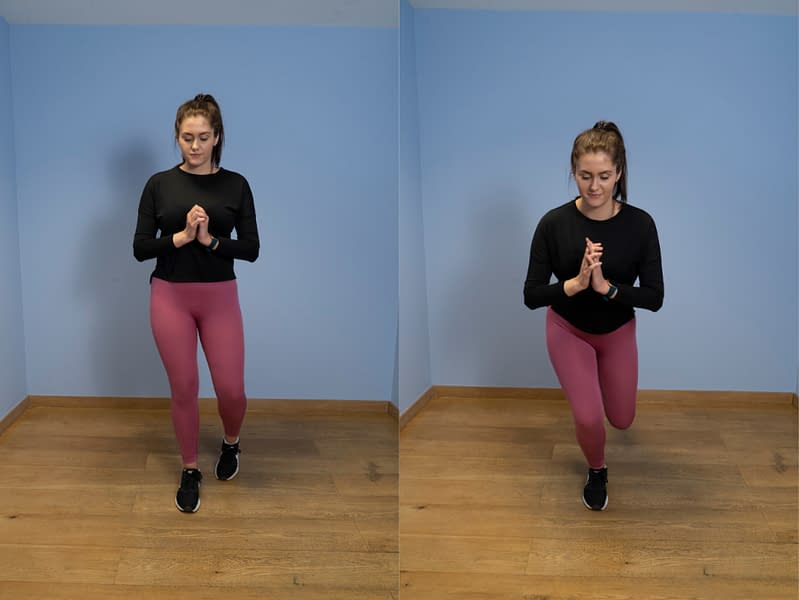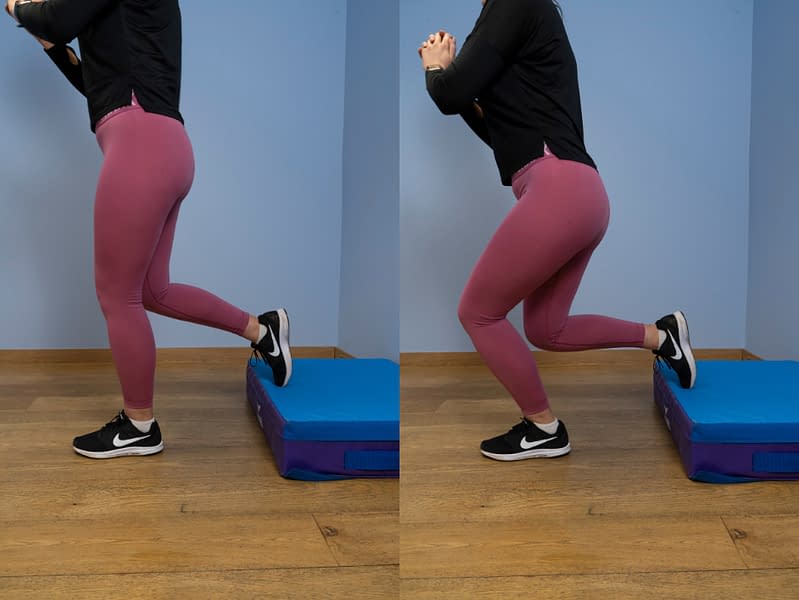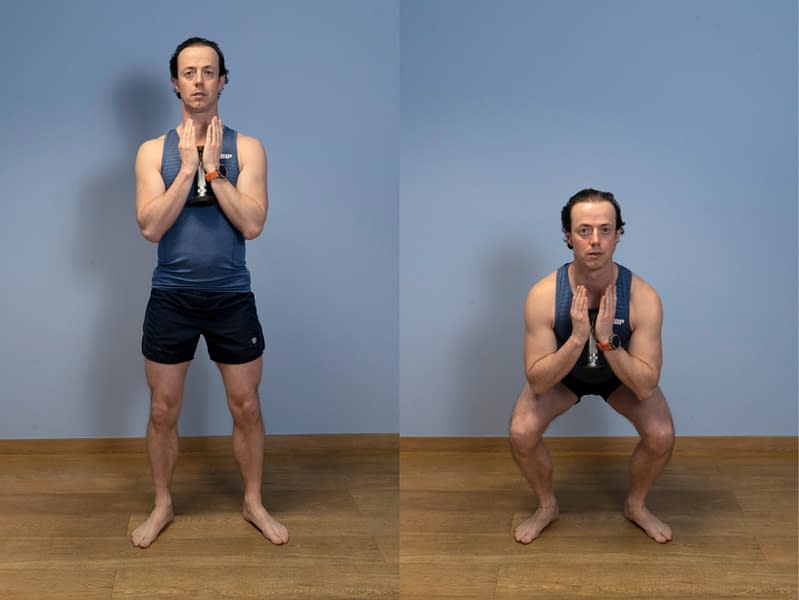Patella Dislocation Advanced Exercise Programme
Aim to perform this programme a minimum of once per day unless prescribed otherwise. As with any new exercise, start slowly (repetitions as able) and build up as you are able within the guidelines below.
Pain should not exceed 4/10 whilst completing this exercise programme.
1. Single leg squat with toe touch
- Start by standing with all the weight on the target leg.
- Now place the toes/ball of the other foot of the supporting leg next to or slightly behind the standing leg.
- Begin with 60% of the weight on the standing leg and 40% on the supporting leg.
- Bend the knee and the same time bend the hip as if you were sitting back into a chair.
- Go down until the standing knee is approximately at a right angle.
- Slowly return to an upright position and repeat.
- As the exercise gets easier reduce the support on the non-standing leg.
2. Bulgarian split squat
- For this exercise, you will need a secure raised surface behind you such as a small step.
- Stand upright in front of the surface facing away from it.
- Transfer your weight on to the target leg and place the foot of the trailing leg up on the small step.
- Bend the knee and hip of the standing leg so that your hips lower directly downwards to the point where the trailing knee is just off the floor.
- Hold for 3 seconds before squeezing the buttock and thigh muscles to straighten the standing leg – do not forcibly lock out the knee.
- Repeat for the recommended repetitions.
3. Weighted squat
- Stand upright with your feet hip-width apart and a weight placed evenly across your shoulders (back squat) or holding it securely against your chest (goblet squat).
- Engage the abdominal region and in a controlled manner, sit back as if you are sitting into a chair.
- At the same time, your head and chest will come forwards to maintain your balance, aim to keep your back straight.
- Go down as far as you feel comfortable or until your thighs are parallel with the floor.
- Come back up to standing and repeat.
We recommend consulting a musculoskeletal physiotherapist to ensure exercises are best suited to your recovery. If you are carrying out an exercise regime without consulting a healthcare professional, you do so at your own risk. If you have any concerns whilst completing these exercises, please contact a healthcare professional.
More Plans
Early stages of rehabilitation should focus on swelling management, recovering range of motion and light core, glute and quad strengthening and proprioception work as able.
- 0
- 1
- 2
- 3
- 4
- 5
- 6
- 7
- 8
- 910
Mid stage rehabilitation should focus on weight bearing, alignment work, biasing VMO and general strengthening and proprioception exercise.
- 0
- 1
- 2
- 3
- 4
- 5
- 6
- 7
- 8
- 910


